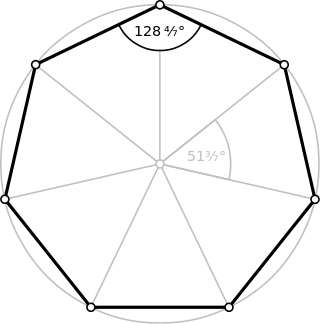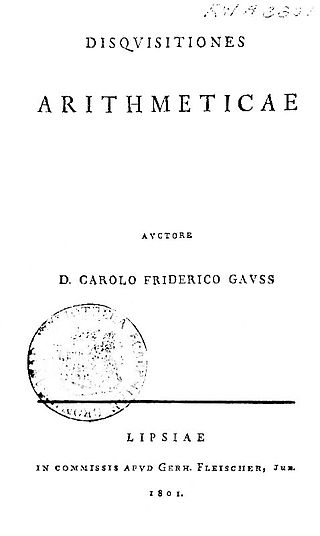Normal(s) or The Normal(s) may refer to:
Normal(s) or The Normal(s) may refer to:

In mathematics, a field is a set on which addition, subtraction, multiplication, and division are defined and behave as the corresponding operations on rational and real numbers. A field is thus a fundamental algebraic structure which is widely used in algebra, number theory, and many other areas of mathematics.

In mathematics, a Lie group is a group that is also a differentiable manifold, such that group multiplication and taking inverses are both differentiable.

In abstract algebra, group theory studies the algebraic structures known as groups. The concept of a group is central to abstract algebra: other well-known algebraic structures, such as rings, fields, and vector spaces, can all be seen as groups endowed with additional operations and axioms. Groups recur throughout mathematics, and the methods of group theory have influenced many parts of algebra. Linear algebraic groups and Lie groups are two branches of group theory that have experienced advances and have become subject areas in their own right.

In mathematics, the general linear group of degree n is the set of n×n invertible matrices, together with the operation of ordinary matrix multiplication. This forms a group, because the product of two invertible matrices is again invertible, and the inverse of an invertible matrix is invertible, with the identity matrix as the identity element of the group. The group is so named because the columns of an invertible matrix are linearly independent, hence the vectors/points they define are in general linear position, and matrices in the general linear group take points in general linear position to points in general linear position.

Algebraic number theory is a branch of number theory that uses the techniques of abstract algebra to study the integers, rational numbers, and their generalizations. Number-theoretic questions are expressed in terms of properties of algebraic objects such as algebraic number fields and their rings of integers, finite fields, and function fields. These properties, such as whether a ring admits unique factorization, the behavior of ideals, and the Galois groups of fields, can resolve questions of primary importance in number theory, like the existence of solutions to Diophantine equations.
In mathematics, class field theory (CFT) is the fundamental branch of algebraic number theory whose goal is to describe all the abelian Galois extensions of local and global fields using objects associated to the ground field.

In mathematics, a linear algebraic group is a subgroup of the group of invertible matrices that is defined by polynomial equations. An example is the orthogonal group, defined by the relation where is the transpose of .
In mathematics, an algebraic torus, where a one dimensional torus is typically denoted by , , or , is a type of commutative affine algebraic group commonly found in projective algebraic geometry and toric geometry. Higher dimensional algebraic tori can be modelled as a product of algebraic groups . These groups were named by analogy with the theory of tori in Lie group theory. For example, over the complex numbers the algebraic torus is isomorphic to the group scheme , which is the scheme theoretic analogue of the Lie group . In fact, any -action on a complex vector space can be pulled back to a -action from the inclusion as real manifolds.

In mathematics, a group scheme is a type of object from algebraic geometry equipped with a composition law. Group schemes arise naturally as symmetries of schemes, and they generalize algebraic groups, in the sense that all algebraic groups have group scheme structure, but group schemes are not necessarily connected, smooth, or defined over a field. This extra generality allows one to study richer infinitesimal structures, and this can help one to understand and answer questions of arithmetic significance. The category of group schemes is somewhat better behaved than that of group varieties, since all homomorphisms have kernels, and there is a well-behaved deformation theory. Group schemes that are not algebraic groups play a significant role in arithmetic geometry and algebraic topology, since they come up in contexts of Galois representations and moduli problems. The initial development of the theory of group schemes was due to Alexander Grothendieck, Michel Raynaud and Michel Demazure in the early 1960s.
Norm, the Norm or NORM may refer to:

Symmetry occurs not only in geometry, but also in other branches of mathematics. Symmetry is a type of invariance: the property that a mathematical object remains unchanged under a set of operations or transformations.
In mathematics, a classification theorem answers the classification problem: "What are the objects of a given type, up to some equivalence?". It gives a non-redundant enumeration: each object is equivalent to exactly one class.
In mathematics, a class formation is a topological group acting on a module satisfying certain conditions. Class formations were introduced by Emil Artin and John Tate to organize the various Galois groups and modules that appear in class field theory.
In ring theory and Frobenius algebra extensions, areas of mathematics, there is a notion of depth two subring or depth of a Frobenius extension. The notion of depth two is important in a certain noncommutative Galois theory, which generates Hopf algebroids in place of the more classical Galois groups, whereas the notion of depth greater than two measures the defect, or distance, from being depth two in a tower of iterated endomorphism rings above the subring. A more recent definition of depth of any unital subring in any associative ring is proposed in a paper studying the depth of a subgroup of a finite group as group algebras over a commutative ring.
In mathematics, an algebraic number field is an extension field of the field of rational numbers such that the field extension has finite degree . Thus is a field that contains and has finite dimension when considered as a vector space over .
Mathematics is a broad subject that is commonly divided in many areas or branches that may be defined by their objects of study, by the used methods, or by both. For example, analytic number theory is a subarea of number theory devoted to the use of methods of analysis for the study of natural numbers.